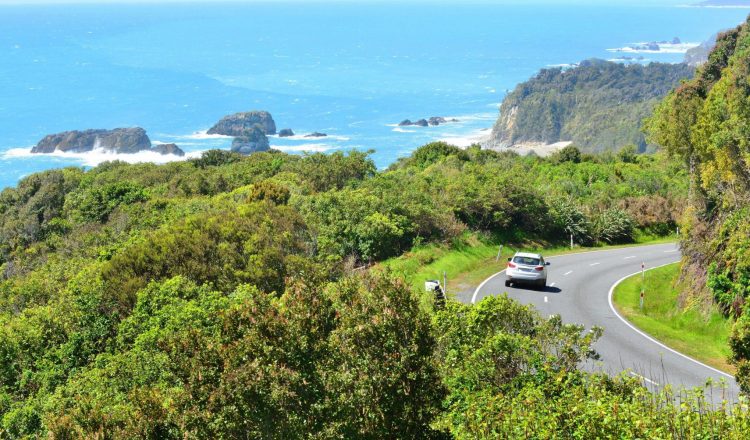冬季驾驶
以下冬季驾驶提示将帮助您为在冰冷、潮湿或雪上行驶的道路上驾驶做好准备和驾车。
我需要考虑什么?
- 通过规划旅程,为冬季安全驾驶做好准备。
- 前,请在旅 程规划师 (外部链接) 上查看交通和旅行更新信息,或拨打 0800 44 44 49。
- 想想你要去的地方以及你应该走什么路线-选择安全而不是方便。
- 考虑你是否真的需要旅行,尤其是天气恶劣的时候。
- 始终检查天气预报。
出发
如果天气恶劣且您的旅行无法推迟,请为您的旅程留出额外的时间。计划在白天中旬或白天开车,因为能见度更好,路上出现冰雪的可能性较低。避免在夜间开车,因为危险迅速增加。
如果长途旅行,请确保您休息良好,并计划休息的地方。如果可能的话,共享驾驶或允许每两小时停靠一次。
如果您要穿越高山和高海拔高速公路,请根据条件穿衣服,携带保暖衣服,并在车内保存救生工具箱以防遇卡住。确保您的汽车适合道路,并在车辆中保存至少半罐汽油,以防您被转移到另一条路线。
为下雪做好准备,携带你知道如何使用和安装的轮胎链。这是关于如何适合链条的视频 (外部链接)
我应该在路上做什么?
-
行
- 驶速度比平时慢-在潮湿或冰冷的条件下,只需短一秒钟就能失去控制。
- 避免突然制动或转动可能导致你滑动。
- 顺利加速并轻轻地刹车。
- 上坡旅行时使用最高的装备,使用最低的下坡。
- 对于没有防滑制动系统的车辆,为了避免滑动或滑动,在短时间内快速冲动制动踏板,而不是用力长按。
- 在安全的行驶距离下行驶,因为在滑坡的道路上停留需要更长的时间。在冬季,尤其是在恶劣的天气下,将两秒规则加倍,并在您和所关注的汽车之间保持一个安全的距离。
- 在雾、雨或雪中旅行时,为了提高安全性,请将灯滴下来驾驶。
在
我在 4WD 中更安全吗?
虽然 4WD 确实具有更好的前进牵引力并提供良好的抓地力,但是您在恶劣天气下驾驶、驾驶到条件下以及遵循上述冬季驾驶技巧的能力仍适用于所有车辆。
那冰雪怎么办?
- 在由高的银行和高大树造成的阴影区域小心,道路更快冻结,白天冰可能不会解冻。
- 桥梁也可能比其他道路表面保持滑滑,因此穿越它们时会减慢速度。
- 冰霜在日休时更严重,所以要为此做好准备。虽然早上 6 点可能不会冷冻,但可能会晚一两个小时。
当心维修车辆
高速公路上可能有冬季维修车辆有助于保持道路畅通。如果你遇到这些车辆中的任何一辆,请在它们后面保持安全距离,除非你接到指示,否则不要通过。
随着封闭和条件的变化,我们的冬季维护人员不断更新高速公路状况。他们掌握了所在地区的最新信息和经验丰富的知识,因此请随时遵循他们的指示和建议。
我旅行时可以获得信息吗?
全国各地的路边都有电子信息标志,向司机提供有关当前情况的最新警告。
这些可能会警告道路封闭、冰雪或其他相关信息。这些标志上的消息将远程更改,在没有限制的情况下将为空。
许多电台广播还将提供道路状况公告,因此请收听当地电台以获取最新消息。
在道路上传播的防冰材料
Grit 和名为 CMA 的抗冰剂在某些道路上被传播或喷洒,以帮助在冰冷的条件下旅行。这不能保证您能以正常速度驾驶,所以请保持降低速度。
如果高速公路上有砂砾,请尽可能在其上行驶,而不是在轮轨上行驶,以最大限度地提高其效果。
记得开车到条件下。冰雪的发生速度意味着有时候粒度和 CMA 还没有传播。
永远记住
- 开车到条件下。
- 在寒冷和潮湿的日子允许更长的跟踪距离。
- 为任何延误做好准备 —— 根据条件穿衣,在车内放热毯、瓶装水和紧急口粮。
- 服从紧急道路封闭的标志和障碍。
- 遵循任何道路巡逻队或警察的指示。
- 避免在冰冷的条件下拖动。
- 为了像你这样的道路使用者和从事道路工作的员工的安全,道路封锁和限制措施已经到位。在封闭的高速公路上开车是违法的。如果您选择忽略关闭或限制,则自行承担风险,这将导致保险失效。
如果事情出错
- 如果发生紧急情况,请拨打 111。
- 如需机械故障,请联系您的故障服务提供商。
- 如果你想报告或查看国家高速公路上的当前道路状况
- 致电 0800 4 条高速公路(0800 44 44 49)
- 通过 www.journeys.nzta.govt.nz (外部链接) 在线查看
- 如果你确实陷入困境,请留在车辆上,并保持每个人的温暖,直到救援到来。
- 如果你卷入了坠机事故,即使没有人受伤,也要告诉警察。这种类型的信息可以帮助我们在必要时改进道路。

















































